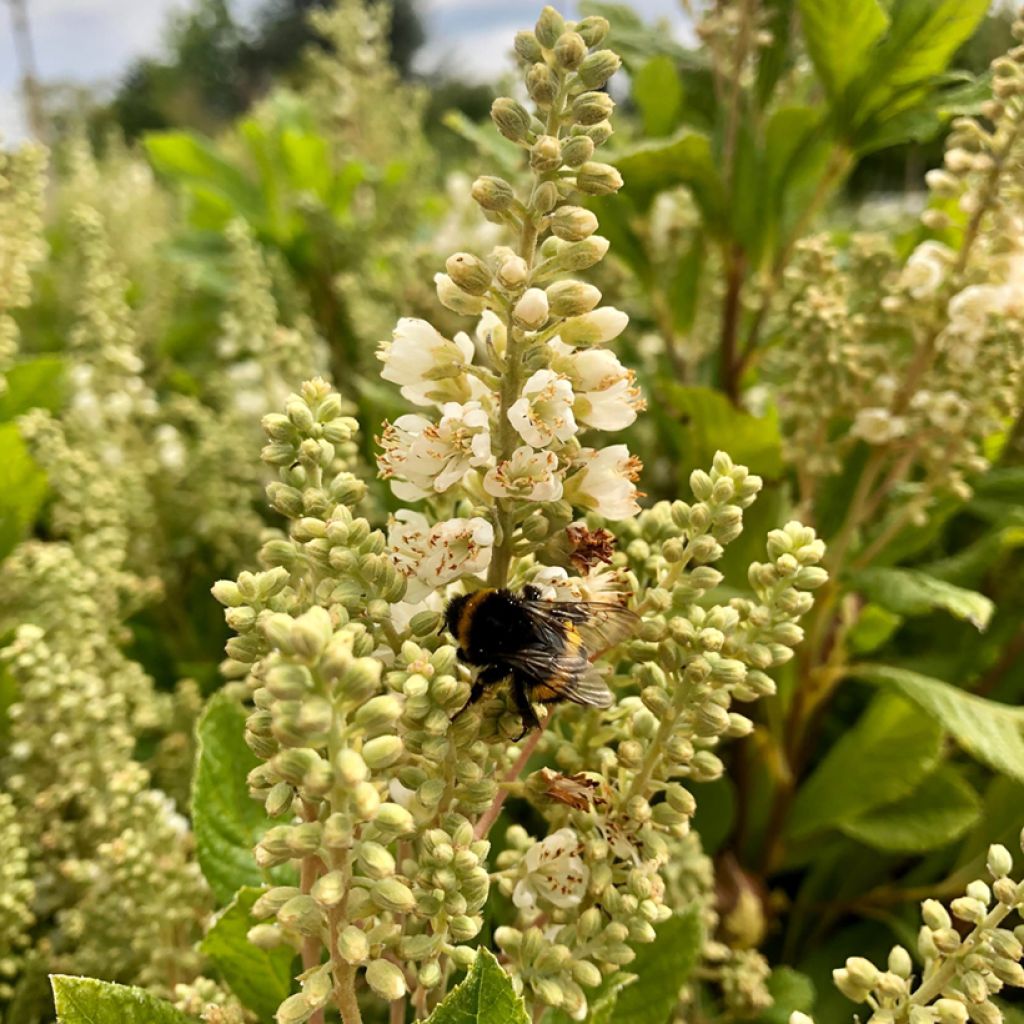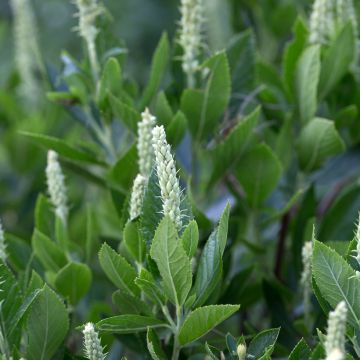

Clethra alnifolia Anne Bidwell


Clethra alnifolia Anne Bidwell


Clethra alnifolia Anne Bidwell


Clethra alnifolia Anne Bidwell


Clethra alnifolia Anne Bidwell


Clethra alnifolia Anne Bidwell


Clethra alnifolia Anne Bidwell
Clethra alnifolia Anne Bidwell
Clethra alnifolia Anne Bidwell
Panicled White Alder, Sweet Pepper Bush
Special offer!
Receive a €20 voucher for any order over €90 (excluding delivery costs, credit notes, and plastic-free options)!
1- Add your favorite plants to your cart.
2- Once you have reached €90, confirm your order (you can even choose the delivery date!).
3- As soon as your order is shipped, you will receive an email containing your voucher code, valid for 3 months (90 days).
Your voucher is unique and can only be used once, for any order with a minimum value of €20, excluding delivery costs.
Can be combined with other current offers, non-divisible and non-refundable.
Home or relay delivery (depending on size and destination)
Schedule delivery date,
and select date in basket
This plant carries a 24 months recovery warranty
More information
We guarantee the quality of our plants for a full growing cycle, and will replace at our expense any plant that fails to recover under normal climatic and planting conditions.
Would this plant suit my garden?
Set up your Plantfit profile →
Description
The Clethra alnifolia 'Anne Bidwell' is a variety appreciated for its numerous and large white and then cream spikes in late summer, slightly scented with aniseed and almond! Its bright flowering contrasts beautifully with its dark green, shiny foliage and reddish stems ! It is a small bush with a particularly erect habit, adapted to less sunny locations and cool, well-drained and acidic soils. Its leaves, similar to those of alders, turn a decorative bright yellow in autumn. Use this shrub to decorate flowerbeds or as a standalone plant, in shaded areas or smaller gardens.
Clethra alnifolia is a small shrub that grows spontaneously in the swamp forests of the eastern coast of the United States. It forms a small dense, wide, rounded, and slightly spreading bush, 2.5 m (8 ft 2 in) to 3 m (9 ft 10 in) tall.
The 'Anne Bidwell' variety is a version of the Alder-leaved Clethra with large white and then cream spikes, particularly numerous in August. It forms a small bush about 2 m (6 ft 7 in) tall and 1.20 m (3 ft 11 in) wide, with an upright and bushy silhouette. When it likes its environment, it spreads through suckers to form small groves. Its multiple and upright branches bear deciduous foliage consisting of fine ovate, dentate and glabrous leaves with strongly marked veins. They appear late in spring in shades of yellow-green and then light green when mature. In autumn, the shrub turns a decorative intense yellow before the foliage falls.
The Alder-leaved Clethra 'Anne Bidwell' stands out for its abundant, large, white turning cream blooms. In July and August, the shrub is covered with numerous upright white spikes 20 to 25 cm (7.9 to 9.8 in) long. Its spiky flowers are comprise small bell-shaped flowers with feathery stamens that open from bottom to top along the cluster. The flowering of this delicately scented dwarf clethra attracts butterflies, hummingbirds, and bees beneficial to biodiversity in the garden! The flowers then give rise to small fruits in the form of brown capsules in September. This decorative fruiting persists on the shrub until winter and provides a valuable food source for birds.
Due to its origins, Clethra alnifolia appreciates shaded locations and cool, rich, loose soil with an acidic tendency. It is averse to high temperatures and drought, therefore, it can only be planted in full sun in moderately warm summer climates. While Alder-leaved Clethras tolerate full shade, their growth may be slower and their flowering less abundant. Very resistant to diseases and hardy (can withstand temperatures of at least -15°), this Clethra is easy to grow and will offer all its splendour with minimal care!
In a small garden, Clethra alnifolia 'Anne Bidwell' can be planted as a standalone plant and enliven the space with its exceptional flowering and beautiful autumn colours. This attractive small shrub will also find its place in a bed of acid-loving plants associated with the ENCORE Lily Azalea, an Early Sensation Hydrangea paniculata, or the Camellia sasanqua Choji Guruma to spread and vary the blooms. The Alder-leaved Clethra can also be used in a low hedge, combined with shrubs with decorative foliage. Its suckers make it highly appreciated for stabilising sloping soils, it will easily find its place on a slope, in damp areas, and will develop into a small grove. Its small size allows it to be grown in containers to decorate terraces and balconies, provided that it is watered regularly. Don't hesitate to plant it near a living or thoroughfare area to enjoy its delicate spicy fragrance!
Clethra alnifolia Anne Bidwell in pictures






Plant habit
Flowering
Foliage
Botanical data
Clethra
alnifolia
Anne Bidwell
Clethraceae
Panicled White Alder, Sweet Pepper Bush
Cultivar or hybrid
Other Clethra
View all →Planting and care
Clethra alnifolia are native to the swampy forests of boreal America. They therefore appreciate shady, cool locations and rich, loose soil with an acidic tendency. They are averse to high temperatures and drought and can only be planted in full sun in moderately warm summer climates. Clethras alnifolia can tolerate full shade but their growth may be slower and their flowering less abundant.
Plant Clethra alnifolia 'Anne Bidwell' in a wide hole. Mix peat or heather compost with your garden soil to lighten and acidify it. A pine bark mulch will help retain moisture and maintain a pH conducive to growth. Water generously during the growing season, especially during the first two years after planting.
Pruning of Clethra alnifolia should be carried out at the end of winter to remove dead, diseased, or broken branches. It is also advisable to deadhead at the end of flowering to preserve the energy of the bush.
Highly resistant to diseases and hardy (it can withstand temperatures of at least -15°C (5 °F)), the Alder-leaf Clethra is enjoyable to grow and will offer all its splendour with minimal care!
Planting period
Intended location
Care
Planting & care advice
This item has not been reviewed yet - be the first to leave a review about it.
Haven't found what you were looking for?
Hardiness is the lowest winter temperature a plant can endure without suffering serious damage or even dying. However, hardiness is affected by location (a sheltered area, such as a patio), protection (winter cover) and soil type (hardiness is improved by well-drained soil).

Photo Sharing Terms & Conditions
In order to encourage gardeners to interact and share their experiences, Promesse de fleurs offers various media enabling content to be uploaded onto its Site - in particular via the ‘Photo sharing’ module.
The User agrees to refrain from:
- Posting any content that is illegal, prejudicial, insulting, racist, inciteful to hatred, revisionist, contrary to public decency, that infringes on privacy or on the privacy rights of third parties, in particular the publicity rights of persons and goods, intellectual property rights, or the right to privacy.
- Submitting content on behalf of a third party;
- Impersonate the identity of a third party and/or publish any personal information about a third party;
In general, the User undertakes to refrain from any unethical behaviour.
All Content (in particular text, comments, files, images, photos, videos, creative works, etc.), which may be subject to property or intellectual property rights, image or other private rights, shall remain the property of the User, subject to the limited rights granted by the terms of the licence granted by Promesse de fleurs as stated below. Users are at liberty to publish or not to publish such Content on the Site, notably via the ‘Photo Sharing’ facility, and accept that this Content shall be made public and freely accessible, notably on the Internet.
Users further acknowledge, undertake to have ,and guarantee that they hold all necessary rights and permissions to publish such material on the Site, in particular with regard to the legislation in force pertaining to any privacy, property, intellectual property, image, or contractual rights, or rights of any other nature. By publishing such Content on the Site, Users acknowledge accepting full liability as publishers of the Content within the meaning of the law, and grant Promesse de fleurs, free of charge, an inclusive, worldwide licence for the said Content for the entire duration of its publication, including all reproduction, representation, up/downloading, displaying, performing, transmission, and storage rights.
Users also grant permission for their name to be linked to the Content and accept that this link may not always be made available.
By engaging in posting material, Users consent to their Content becoming automatically accessible on the Internet, in particular on other sites and/or blogs and/or web pages of the Promesse de fleurs site, including in particular social pages and the Promesse de fleurs catalogue.
Users may secure the removal of entrusted content free of charge by issuing a simple request via our contact form.
The flowering period indicated on our website applies to countries and regions located in USDA zone 8 (France, the United Kingdom, Ireland, the Netherlands, etc.)
It will vary according to where you live:
- In zones 9 to 10 (Italy, Spain, Greece, etc.), flowering will occur about 2 to 4 weeks earlier.
- In zones 6 to 7 (Germany, Poland, Slovenia, and lower mountainous regions), flowering will be delayed by 2 to 3 weeks.
- In zone 5 (Central Europe, Scandinavia), blooming will be delayed by 3 to 5 weeks.
In temperate climates, pruning of spring-flowering shrubs (forsythia, spireas, etc.) should be done just after flowering.
Pruning of summer-flowering shrubs (Indian Lilac, Perovskia, etc.) can be done in winter or spring.
In cold regions as well as with frost-sensitive plants, avoid pruning too early when severe frosts may still occur.
The planting period indicated on our website applies to countries and regions located in USDA zone 8 (France, United Kingdom, Ireland, Netherlands).
It will vary according to where you live:
- In Mediterranean zones (Marseille, Madrid, Milan, etc.), autumn and winter are the best planting periods.
- In continental zones (Strasbourg, Munich, Vienna, etc.), delay planting by 2 to 3 weeks in spring and bring it forward by 2 to 4 weeks in autumn.
- In mountainous regions (the Alps, Pyrenees, Carpathians, etc.), it is best to plant in late spring (May-June) or late summer (August-September).
The harvesting period indicated on our website applies to countries and regions in USDA zone 8 (France, England, Ireland, the Netherlands).
In colder areas (Scandinavia, Poland, Austria...) fruit and vegetable harvests are likely to be delayed by 3-4 weeks.
In warmer areas (Italy, Spain, Greece, etc.), harvesting will probably take place earlier, depending on weather conditions.
The sowing periods indicated on our website apply to countries and regions within USDA Zone 8 (France, UK, Ireland, Netherlands).
In colder areas (Scandinavia, Poland, Austria...), delay any outdoor sowing by 3-4 weeks, or sow under glass.
In warmer climes (Italy, Spain, Greece, etc.), bring outdoor sowing forward by a few weeks.
















































